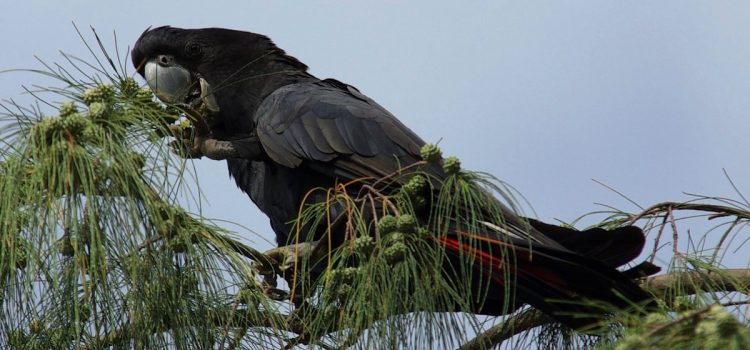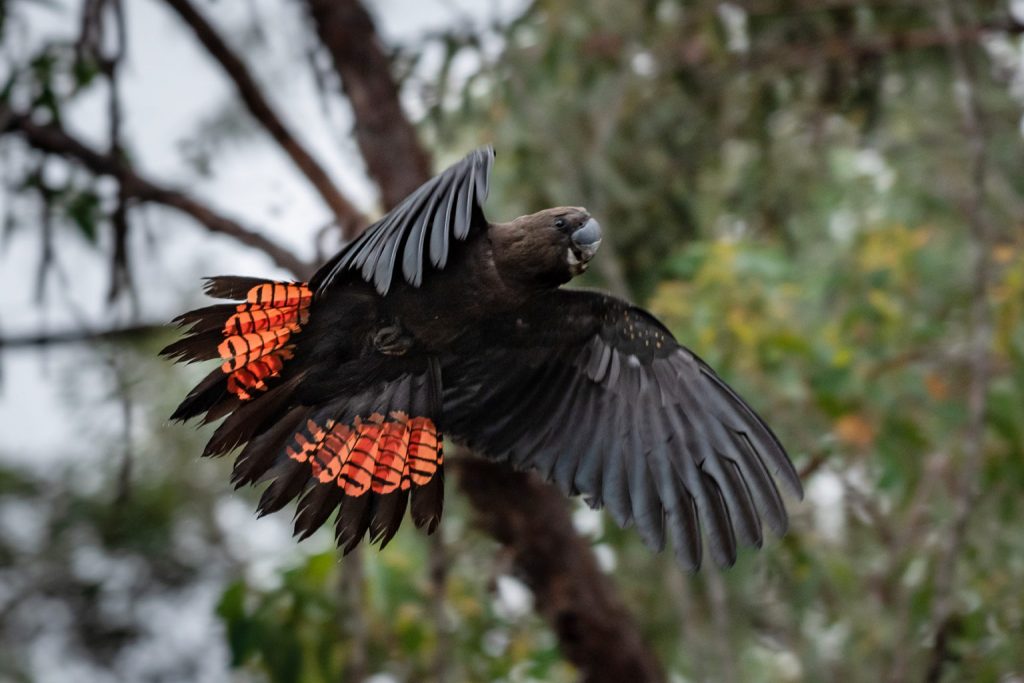
Dignams Creek nesting box project to lend a hand for the survival of Glossy Black Cockatoos
We are lucky with our property in Dignams Creek, we are constantly privy to some of Australia’s amazing wildlife. One such species is the glorious Glossy Black Cockatoo with its distinct cry which we often see in the trees. However, we must question why we are suddenly seeing so many of these mesmerizing birds which would normally roam in remote forests. Sadly, the Black Summer bushfires disrupted the lives of many Australian species, including the Glossy Black Cockatoo. The catastrophic Black Summer bushfires of 2019/20 saw fires raze across large tracts of forests, destroying crucial nesting trees and leaving the cockatoos vulnerable. Glossy Black Cockatoos primarily nest in tree hollows, which are often formed over decades, even centuries. Without proper nesting spaces, the cockatoos face difficulties in raising their chicks, which could potentially lead to a decline in their already fragile population.

In response to habitat loss these remarkable birds have shown resilience and adaptability by seeking refuge in built-up areas. As we witness these feathered survivors in our midst, we are reminded of our shared responsibility to protect and preserve the diverse and captivating wildlife that enriches our world. With this in mind, residents of Dignams Creek have set out to give the Glossy Blacks a helping hand.
A team of residents sourced material and then designed the nesting boxes. Our neighbour and woodwork craftsman, Mark Lenny, then built them for our feathered friends. Size, temperature and enter and exit points and even the colour of paint used were all important considerations. The boxes have then been positioned in an easterly or north easterly direction at least 11 metres up a eucalypt tree. So far, these boxes have mainly been placed in the northern end of Dignams Creek on the land of keen environmentalist Nick Van Stekelenburg.
The overall objective of the nesting boxes is to provide a safe haven in the face of adversity for the Glossy Black Cockatoos to raise their chicks. Nesting boxes offer an immediate solution for displaced Glossy Black Cockatoos. As natural nesting sites become scarcer, these boxes provide a much-needed sanctuary for breeding and raising chicks. With the increasing unpredictability of weather patterns due to human induced climate change, nesting boxes offer a stable and controlled environment, shielding the cockatoos from extreme conditions. Installing nesting boxes allows researchers and conservationists to monitor and study the Glossy Black Cockatoos population more effectively, contributing to their long-term survival.
Nesting boxes, also known as artificial nest hollows, have emerged as a beacon of hope for the Glossy Black Cockatoos. These man-made structures attempt to replicate the natural tree hollows and provide a safe environment for nesting and raising their young. Installing nesting boxes in suitable locations offers the cockatoos a chance to recover and thrive in the face of the destruction of their natural habitat.
If you’re eager to contribute to the conservation of Glossy Black Cockatoos, you can play a role by installing nesting boxes in your area. Here’s how:
- Learn about the specific nesting requirements of Glossy Black Cockatoos, such as box dimensions, placement height, and suitable tree species.
- You can either build nesting boxes following established guidelines or purchase pre-made ones. Ensure they are made from durable, non-toxic materials.
- Install the nesting boxes in areas where Glossy Black Cockatoos are known to inhabit or frequent. Make sure they are secure and protected from strong winds and direct sunlight.
- Regularly check the nesting boxes for occupancy, breeding activity, and any maintenance needs. Remember, patience is key; it may take some time for the cockatoos to discover and adopt the boxes.
Due to environmental challenges such as the Black Summer bushfires, and reductions in native forest the importance of nesting boxes for Glossy Black Cockatoos cannot be overstated. By embracing nesting boxes, we contribute to the conservation of these captivating creatures and ensure a brighter future for generations to come.
We look forward to keeping you up to date on the progress of the nesting box project.
